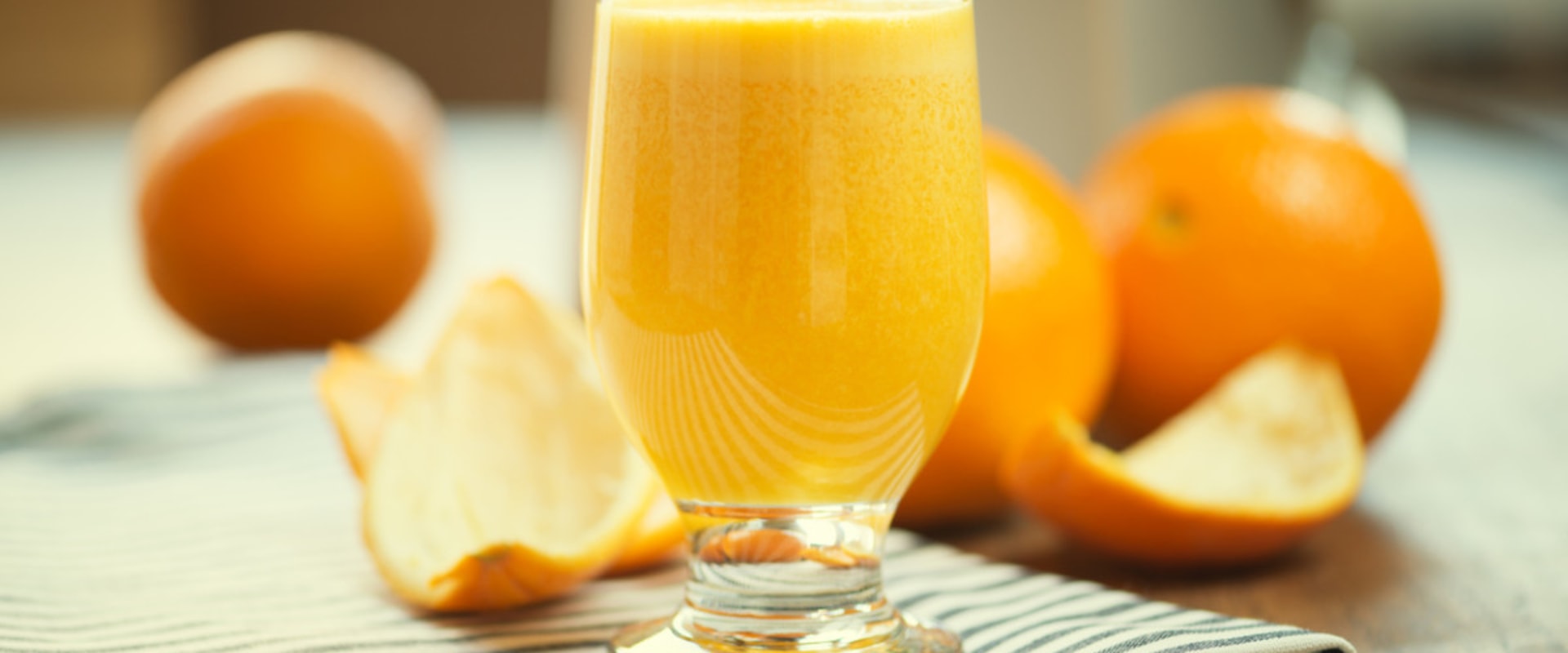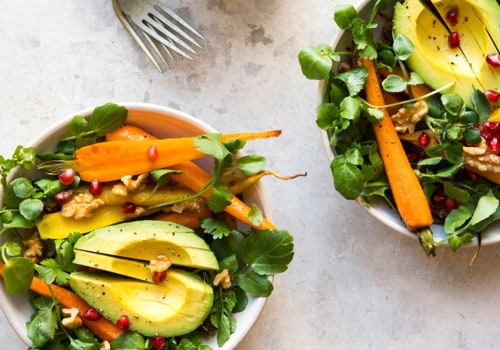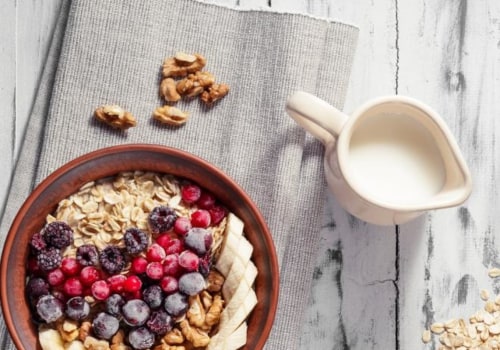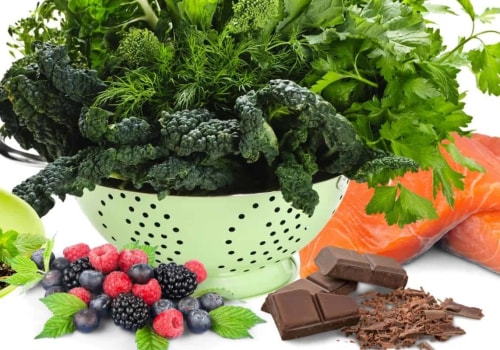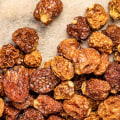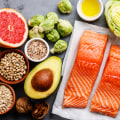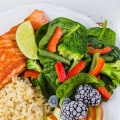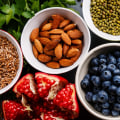The 10 healthiest foods on EarthGarlic. I agree, it can make your breath smell bad, but believe us, the benefits it provides are worth it. Lemons have been widely considered by the health industry to be the healthiest food in the world. These are the 11 most nutrient-rich foods on the planet.
Salmon and other types of fatty fish contain the highest amount of omega-3 fatty acids. Although salmon is primarily prized for its beneficial fatty acid composition, it also contains large amounts of other nutrients. A 100-gram serving of wild Atlantic salmon contains approximately 2.2 grams of omega-3, along with a large amount of high-quality animal protein and abundant vitamins and minerals, including large amounts of magnesium, potassium, selenium and B vitamins (. Studies show that people who regularly eat fatty fish have a lower risk of heart disease, dementia, depression and many other common health conditions (3, 4, 5,.
Salmon tastes good and is quite simple to prepare. It also tends to make you feel full with relatively few calories. If you can, choose wild salmon instead of farmed salmon. It is more nutritious, has a better ratio of omega-6 to omega-3 and is less likely to contain contaminants (7,.
Of all the leafy greens, kale is the queen. Kale may be even healthier than spinach. Both are very nutritious, but kale is low in oxalates, substances that can retain minerals such as calcium in the intestine and prevent them from being absorbed (. Kale and other vegetables are also high in several bioactive compounds, such as isothiocyanates and indole-3-carbinol, which have been shown to fight cancer in trials and in animals (11, 1).
Kale is one of the most nutrient-rich vegetables you can eat, as it contains large amounts of vitamins, minerals and compounds that can fight cancer. There are thousands of different plant species in the ocean, some of which are very nutritious. They are generally known collectively as seaweed (1). Seaweed is popular in dishes such as sushi).
Many sushi dishes include a type of seaweed known as nori, which is used as an edible wrapper. But algae really shine because of their high content of iodine, a mineral that the body uses to produce thyroid hormones. Just eating algae that is high in iodine, such as seaweed, several times a month can give your body all the iodine it needs. Garlic is truly an incredible ingredient.
Garlic is also high in beneficial sulfur compounds such as allicin. Many studies suggest that allicin and garlic may lower blood pressure, as well as total cholesterol and LDL (bad). It also helps increase HDL (good) cholesterol, which could reduce the risk of heart disease in the future (17, 18, 19, 20). Garlic also has several cancer-fighting properties.
Some previous studies suggest that people who eat a lot of garlic have a much lower risk of several common types of cancer, especially colon and stomach cancers (21, 2). Raw garlic also has important antibacterial and antifungal properties (23, 2). Many marine animals are high in nutrients, but seafood may be among the most nutritious of all. Clams, oysters, scallops, and mussels are commonly eaten types of seafood.
Just 100 grams provide 600% of the RDI for zinc, 200% of the RDI for copper, and large amounts of vitamin B12, vitamin D and several other nutrients (2). Potatoes are high in potassium, magnesium, iron, copper and manganese). They also contain vitamin C and most of the B vitamins (2). They contain a little bit of almost all the nutrients you need.
There are stories of people who lived on nothing but potatoes for a long time. Potatoes are also one of the most filling foods. When researchers compared the satiety values of different foods, boiled potatoes scored higher than any other food measured (2). If you let potatoes cool after cooking, they also form resistant starch, a fiber-like substance with many powerful health benefits (2).
Potatoes contain a little bit of almost all the nutrients you need. They are incredibly satiating and can provide large amounts of resistant starch. Of all the organs, the liver is by far the most nutritious. The liver is a remarkable organ with hundreds of functions related to metabolism.
One of its functions is to store important nutrients for the rest of the body. Eating liver once a week is a good way to ensure you're getting optimal amounts of these vital nutrients. The liver is a highly nutritious, meat organ containing large amounts of B vitamins and other healthy substances. Sardines are small, fatty fish that can be eaten whole.
They contain a little bit of almost all the nutrients the body needs (3). Small, fatty fish, such as sardines, are generally eaten whole, eating up organs, bones, and other nutritious parts. They are full of powerful antioxidant substances, such as anthocyanins and several other plant compounds, some of which can cross the blood-brain barrier and exert protective effects on the brain (3). One study found that blueberries improved memory in older adults (3).
Another study found that obese men and women with metabolic syndrome had lower blood pressure and reduced markers of oxidized LDL (bad) cholesterol after adding them to their diet (3). This finding is in line with studies showing that blueberries increase the antioxidant value of your blood (3). Multiple test-tube and animal studies also suggest that blueberries may help fight cancer (36, 37, 3). Egg yolks are loaded with vitamins, minerals, and several powerful nutrients, including choline (40%).
Eggs also contain high-quality proteins and healthy fats. Several studies suggest that they may help you lose weight (42, 4). It is full of fiber, iron, magnesium, copper and manganese (4). In fact, one study showed that cocoa and dark chocolate scored higher in antioxidants than any other food analyzed, including blueberries and acai berries (4).
Several human studies suggest that dark chocolate has powerful health benefits, such as improving blood flow, lowering blood pressure, reducing oxidized LDL cholesterol, and improving brain function (48)., 49, 50). Make sure you get dark chocolate with at least 70% cocoa content. The best ones contain 85% cocoa or more. Nutrient-rich foods are rich in nutrients relative to their caloric content.
These include several healthy foods, such as whole vegetables, fruits, cocoa, seafood, eggs, and liver. Magnesium is a very important nutrient that most people don't get enough of. Here are 10 magnesium-rich foods that are also super healthy. Everyone knows that vegetables are healthy, but some stand out from the rest.
Here are 14 of the healthiest vegetables out there. Eggs are among the healthiest and most nutritious foods on the planet. These are the top 10 health benefits of eating eggs, backed by science. Nutrient deficiencies can occur with almost all nutrients, but some are more likely than others.
Here are 7 incredibly common nutrient deficiencies. This is a detailed article about kale and its health benefits. Kale is actually one of the healthiest and most nutritious foods on the planet. Broccoli provides good amounts of fiber, calcium, potassium, folic acid and phytonutrients.
Phytonutrients are compounds that reduce the risk of developing heart disease, diabetes and some types of cancer. However, overcooking broccoli can destroy many of its key nutrients. For this reason, it is best to eat it raw or lightly steamed. Learn more about broccoli's nutritional impact here.
Apples are an excellent source of antioxidants, which fight free radicals. Free radicals are harmful substances generated by the body. They cause undesirable changes in the body and can contribute to chronic diseases, as well as to the aging process. Kale is a leafy green vegetable that offers a wide range of different nutrients.
For example, this powerfully nutritious plant is an excellent source of vitamins C and K. People can cook or steam kale. They can also mix it into smoothies or juices for a nutritional touch. Learn more about including kale in your diet here.
Blueberries provide substantial amounts of fiber, antioxidants, and phytonutrients. Unlike minerals and vitamins, phytonutrients are not essential for survival. However, they can help prevent diseases and maintain vital body functions. Discover the nutritional power of blueberries.
Some people avoid eating avocados because of their high fat content. However, avocados provide healthy fats, as well as B vitamins, vitamin K, and vitamin E. Avocados are also a good source of fiber. Avocados are very nutritious and very filling.
Sweet potatoes provide dietary fiber, vitamin A, vitamin C, vitamin B-6, and potassium. The Center for Science in the Public Interest compared the nutritional value of sweet potatoes with that of several other vegetables. Sweet potatoes ranked first for their content of vitamin A, vitamin C, iron, calcium, proteins and complex carbohydrates. Eggs contain vitamins such as B-2 and B-12, which are important for preserving energy and generating red blood cells.
Eggs are also a good source of the essential amino acid leucine, which plays a role in stimulating muscle protein synthesis. Eggs also provide a good amount of choline, which is important for cell membranes. So, after reviewing the full list of applicants, we have crowned kale as the healthiest food in existence. Kale has the widest range of benefits, with the least amount of drawbacks when compared to its competitors.
For us, kale is truly queen. Keep reading to find out exactly why. So, kale might top the list, but that doesn't mean we should be eating plates full of kale and nothing but kale from now on. There are many other delicious and versatile superfoods that we can add to our diet.
Try these incredible recipes for exciting new ways to incorporate spinach. Musard greens, popular in Eastern cuisine in 26 percent of South Asia, are a lesser-known superfood, but they're by no means less healthy. They are one of the best sources of vitamin K, which plays a vital role in preventing blood clotting and improving heart and bone health. Other possible benefits of accumulating mustard greens are improved immunity and eye health.
Kale has a lot of fiber, antioxidants, calcium, vitamins C and K, iron, and more. All of these are known to help prevent several health problems. People with diabetes can benefit greatly from increasing the consumption of kale, as it has been shown to reduce the production of toxins associated with problems with high blood sugar levels. Kale is also recommended to increase fiber and potassium intake, both of which may reduce cardiovascular risks.
Finally, kale may even contribute to healthy skin and hair. Its healthy intake of beta-carotene means that it contributes to the maintenance of our body's tissues. Perhaps most importantly, sun-dried tomatoes are absolutely delicious and go well with salads, sandwiches, and pizzas. Try this healthy vegan pizza recipe for a delicious and nutritious treat.
Artichokes are among the richest vegetables in antioxidants in existence. They are delicious, low in fat and full of vitamins and minerals such as vitamin C, vitamin K, folate, phosphorus and magnesium. These small but powerful green vegetables are an inexhaustible source of vitamins and proteins. In fact, a three-quarter cup serving of peas contains more protein than a quarter cup of almonds or a spoonful of peanut butter, so be sure to add these little protein bombs to your post-workout meal.
They are also a powerful serving of essential vitamin K, ideal for fighting osteoporosis. Peppers are truly the versatile superfood. They come in all kinds of shapes and colors, all of which have their own flavors and uses. Color is very often nature's way of telling us that there is goodness inside us, and peppers are the perfect example.
So, we've covered 10 of the healthiest superfoods out there. In our opinion, kale ranks high, but in reality, all the superfoods were made the same way, so start accumulating everything on this list. In particular, keep an eye out for those that, like kale, belong to the cruciferous group (cauliflower, Brussels sprouts, collard greens, cabbage, bok choy, arugula), as this group is the leader when it comes to the healthiest superfoods. Not all breads are carb bombs that are about to break your weight-loss goals.
This nutrient-rich bread is packed with lentils full of folate, proteins, and healthy grains and seeds, such as barley and millet. To enhance the flavor of your slices, make a vegetarian sandwich full of healthy nutrients. In two slices of sprouted whole wheat bread, combine tahine-free hummus, avocado slices, roasted red peppers, cucumbers, onions, spinach and tomatoes, one of the healthiest foods on the planet. Drink 8 to 12 cups of water a day.
Eat dark green vegetables at least three to four times a week. Good options include broccoli, peppers, Brussels sprouts, and leafy greens such as kale and spinach. Eat whole grains at least two to three times a day. Look for whole wheat flour, rye, oats, barley, amaranth, quinoa, or a multigrain.
A good source of fiber has 3 to 4 grams of fiber per serving. A good source contains 5 or more grams of fiber per serving. Try to eat two to three servings of fish a week. One serving consists of 3 to 4 ounces of cooked fish.
Good options are salmon, trout, herring, blue fish, sardines and tuna. Men and women between the ages of 19 and 50 need 1,000 milligrams of calcium a day, and 1,200 milligrams if they are 50 or older. Eat calcium-rich foods, such as low-fat or low-fat dairy products, three to four times a day. Rich in healthy fats, fiber and protein, these nuts are made for more than just snacking.
Use sliced almonds as a topping for oatmeal or yogurt, add them to cupcake recipes, or use almond flour instead of regular flour in pancakes. This low-fat protein base is one of the healthiest foods you can have on hand, according to data from the Cleveland Clinic. But what food can be crowned the healthiest food to eat? In reality, there is no real number one, the diversity of benefits is too broad and individual, but what's so fun about that?. A lentil is a legume that features prominently in many food cultures around the world, including those in Pakistan, Nepal, Bangladesh, India, Bhutan and Sri Lanka.
Ghrelin is the body's “I'm hungry” hormone, which is suppressed when the stomach is full, so eating satiating foods that are high in fiber and protein is a no-brainer. So they tracked down 70-year-old cheerleaders, 80-year-old paratroopers, 90-year-old sprinters, and dozens of other crazy fit and healthy people and asked them what they ate for breakfast, lunch, dinner and snacks, and then wrote a book about it, entitled Secrets of the World's Healthiest People. Read on to learn what it is and how to use it, and then come up with a healthy daily eating plan with more delicious foods that can help you feel better. The satiety index of common foods classifies it as the second most satiating food, surpassed only by boiled potatoes because of their satiety factor.
A food is more nutrient-dense when the level of nutrients is high in relation to the amount of calories it contains. The next time you go to the market or order a food delivery, make sure your shopping list contains as many of these foods as possible. It is vital to know the healthiest foods to ensure a wide range of nutrients in the diet. In one study, participants were divided into groups and were assigned one of three equicaloric weight-loss diets that did not include seafood (the control group), lean white fish, or salmon.
Soy contains isoflavones, genistein and diadzen, which are not found in any other food and have been shown to lower blood cholesterol and slow bone loss. . .
